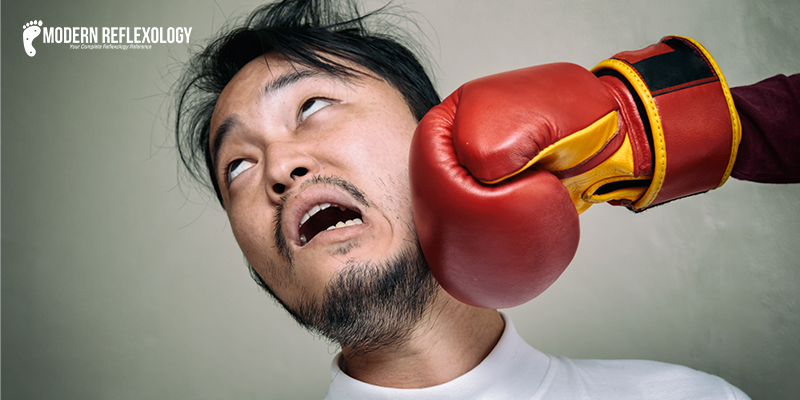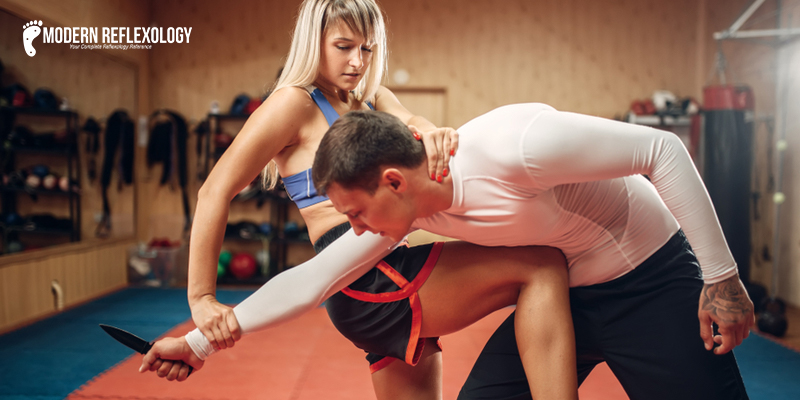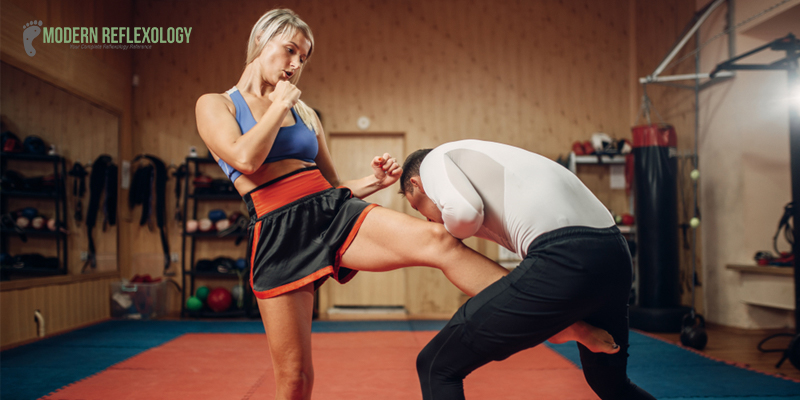Utilizing ancient wisdom gleaned from several martial arts systems, knockout pressure spots are locations on the body where precise punches can cause unconsciousness or even incapacitation. This site seeks to clarify the concepts and methods surrounding knockout pressure points, whether you’re a martial arts fan, interested in learning self-defense skills, or just curious about the complexities of the human body’s weaknesses.
What Is Knockout Pressure?
The topic of pressure point fighting, sometimes known as “self-defense knockout pressure points,” is mysterious and fascinating. But giving the term “Pressure Point Fighting” as a precise definition is not so simple, as many individuals, especially martial artists, will interpret it differently. Pressure point combat can be practical, sound, or completely absurd, depending on the martial arts school or style.
The term “knockout pressure” describes the deliberate application of force to bodily parts in an attempt to render a person unconscious or incapacitated. This idea originates in various martial arts and self-defense systems, where practitioners use their understanding of anatomical weaknesses to their advantage in combat.
Knock Out Pressure Points for Self-defense
Both definitions of blood flow knockout pressure points could be more reliable and workable for practical self-defense uses. Pressure point combat methods that cause “transitory dizziness” are insufficient for situations involving self-defense in the real world. They frequently won’t work on psychotics, intoxicated or drugged attackers, among many other real-world problems. Fighting pain compliance pressure points cannot be regarded as a knockout strategy. Although pain compliance tactics are helpful in some self-defense scenarios, the term “knock out” should never be used in conjunction with them. Only two forms of pressure point combat can be used to knock someone out, as you would have predicted! They are impact pressure points and blood flow fighting.
When it comes to real-world self-defense, time is of the essence. Thus, you need to use street fighting methods that yield results immediately. Therefore, the only effective and safe way to use pressure point fighting is to use tactics that cause the opponent to lose consciousness wholly and instantly.
When we talk about easy knockout pressure points in contemporary fighting arts, we mean pressure points that take a person out. Furthermore, since we solely concentrate on real-world self-defense applications, we define knockout pressure points as those that cause an adversary to lose consciousness entirely and instantly. The terms “complete” and “immediate” are crucial.
Delivering a knockout pressure point that causes a total and instantaneous loss of consciousness can be done in two methods. Both blood flow knockout pressure sites and impact instant knockout pressure points are what they are. Let’s examine each one in brief.
- Impact knockout pressure points: These are essential anatomical sites responsive to physical force and can be applied to your limbs. Using a forceful punch to knock someone out is one example. It is also possible to strike impact knockout pressure points using a variety of hand-held weapons, including a club or kubotan stick.
- Blood flow knockout pressure points: Purposeful pressure applied to these vital organs can cause near-instantaneous unconsciousness.
Common Pressure Points Knockouts
Certain body parts recognized for their susceptibility to blows or pressure are called pressure points, and they are frequently worked on in self-defense and martial arts. Even though the efficiency of striking these locations can change depending on force and accuracy, knowing where to aim can be quite crucial for anyone looking to improve their self-defense abilities. Here are several pressure points that are frequently targeted:
1. Temples
Striking the temples on the sides of the head can affect the temporal arteries, leading to disorientation and potential unconsciousness.
2. Jawline

A well-placed strike to the jawline can cause the head to rotate suddenly, affecting the inner ear and balance and potentially leading to a knockout.
3. Neck

The sides and back of the neck contain vital structures, and precise strikes to these areas can disrupt blood flow and nerve function.
4. Solar Plexus

Located in the upper abdomen, a forceful strike to the solar plexus can cause intense pain and temporary incapacitation.
5. Nose

Striking the nose can cause pain, tears, and disorientation, making it a common target in self-defense.
6. Groin

A targeted strike to the groin area is universally recognized as a highly effective way to debilitate an opponent temporarily.
7. Eyes
Gouging or striking the eyes can be defensive, causing extreme discomfort and potentially impairing an attacker’s vision.
8. Ears
Forceful strikes to the ears can disrupt equilibrium and cause disorientation, mainly if pressure is applied to the ear canal.
9. Collarbone
The collarbone is a relatively fragile bone, and a well-aimed strike can cause pain and temporary incapacitation.
10. Under the Arm
Striking under the arm in the rib area can impact the intercostal nerves, causing pain and hampering an attacker’s ability to breathe easily.
11. Knee
The knee joint is vulnerable to strikes, and a well-executed hit can cause pain and limit an attacker’s mobility.
12. Elbow Joint
Striking the elbow joint can cause pain and temporary disorientation, affecting an opponent’s ability to use their arm effectively.
13. Kidneys
The lower back, where the kidneys are located, is a sensitive area, and a targeted strike can cause significant discomfort.
14. Shin
The shinbone is susceptible to pain, and striking this area can disrupt an attacker’s balance and mobility.
15. Achilles Tendon
A forceful strike to the Achilles tendon can cause intense pain and limit an opponent’s ability to stand or move effectively.
Understanding these commonly targeted pressure points gives individuals insights into potential vulnerabilities in a self-defense situation. It’s important to note that responsible and ethical use of these techniques is crucial, and practitioners should prioritize safety and well-being.
Final Words:
Finally, exploring the world of pressure points in neck to knockout reveals an intriguing nexus between human anatomy, traditional martial arts, and self-defense strategies. Exploration of bodily parts that are vulnerable when deliberately targeted has long been a source of fascination and research.
Understanding knockout pressure points requires a well-rounded approach incorporating historical background, anatomical understanding, and ethical considerations. Even though these skills can empower people in self-defense situations, it’s critical to emphasize their proper application, moral behavior, and obedience to the law.

Comments are closed